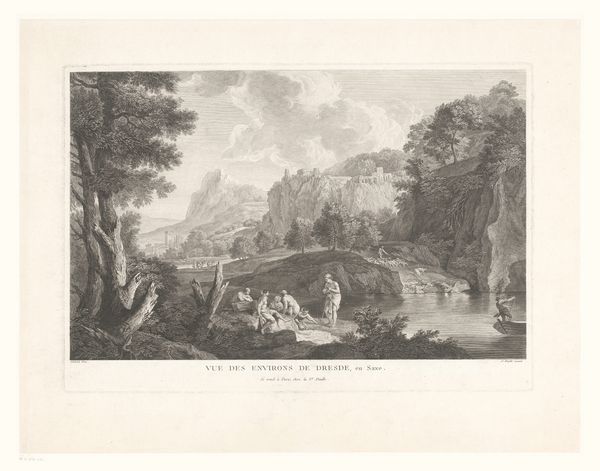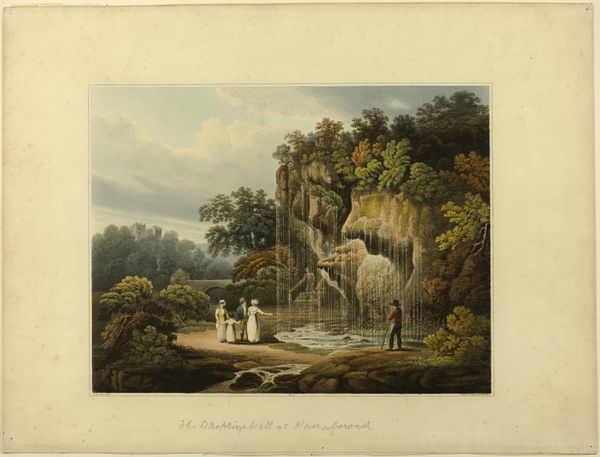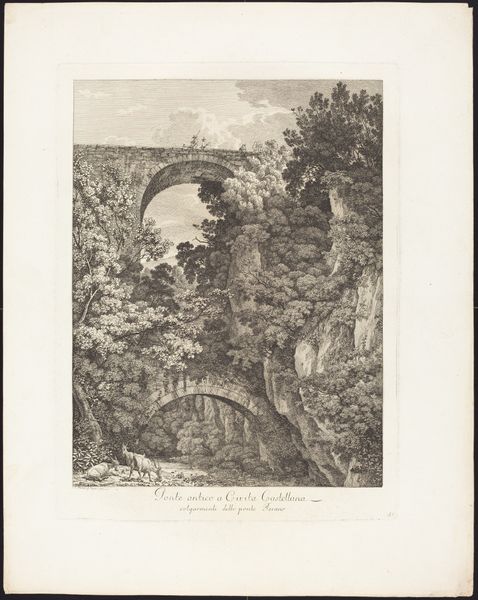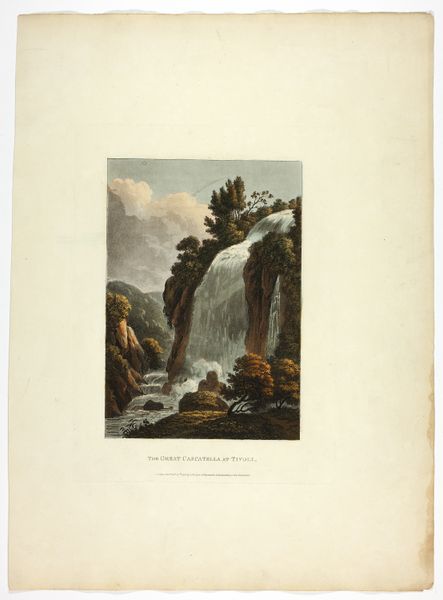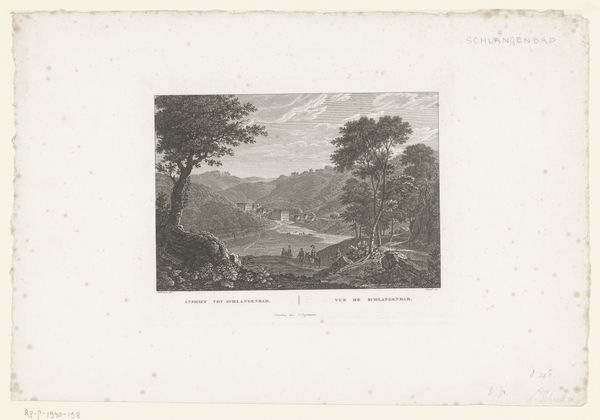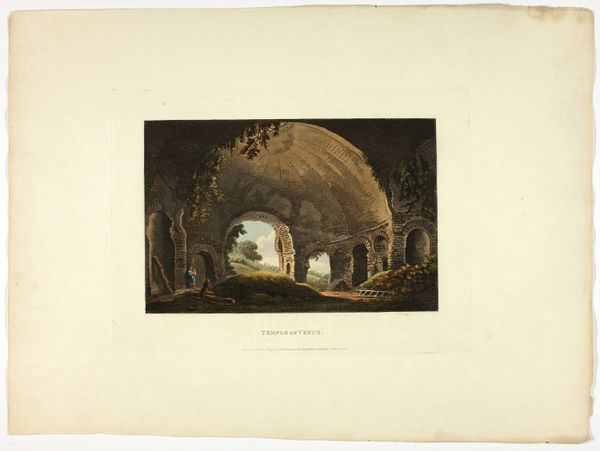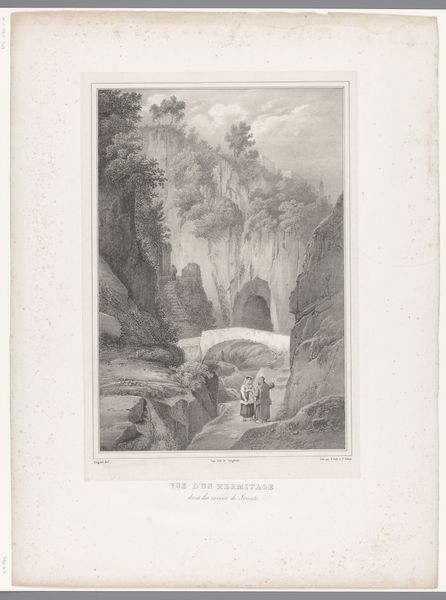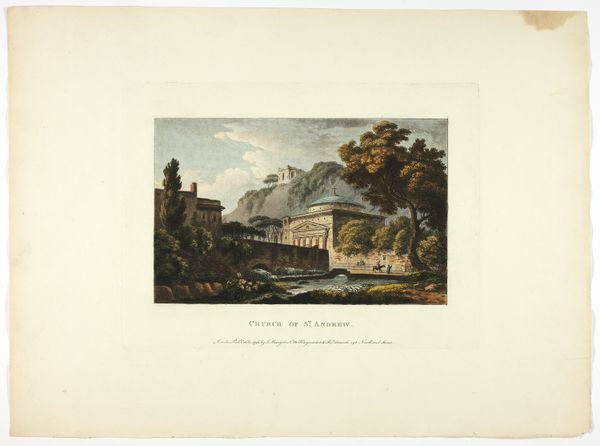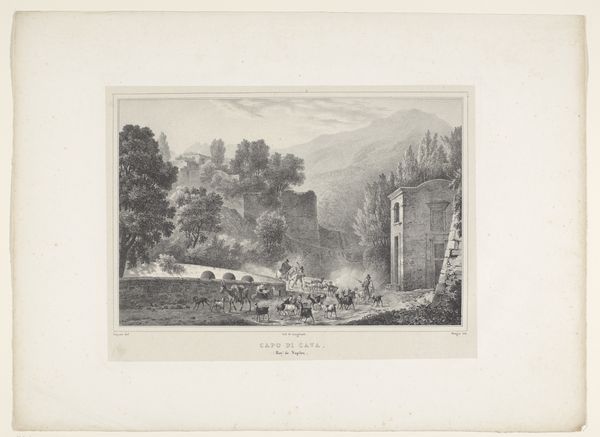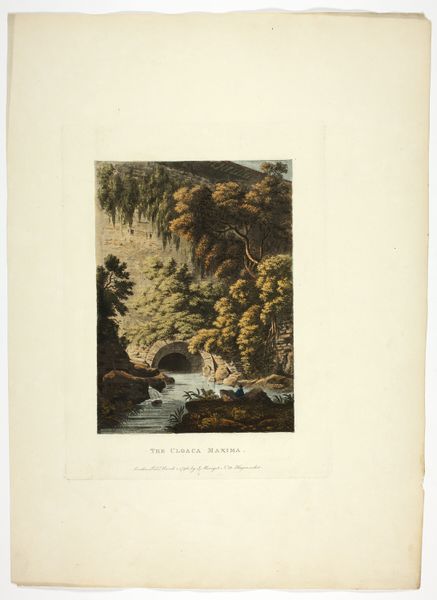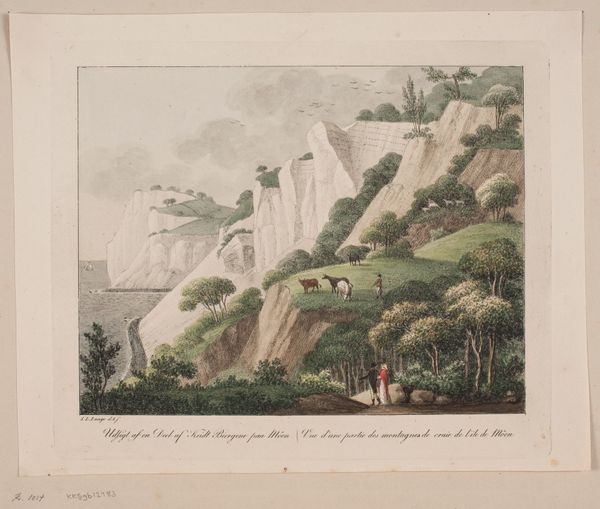
Bridge of Varus, plate twenty-eight from Ruins of Rome Possibly 1798
0:00
0:00
drawing, print, etching, paper, engraving
#
drawing
# print
#
etching
#
landscape
#
paper
#
england
#
romanticism
#
engraving
Dimensions: 330 × 448 mm (sheet)
Copyright: Public Domain
This print of the Bridge of Varus was made by M. Dubourg in the early 19th century, and it is a beautiful example of aquatint. The aquatint process involves etching a metal plate to create tonal effects, which you can see here in the soft gradations of light and shadow. The plate is prepared with a porous ground, then dipped in acid, creating a texture that holds ink and allows for subtle variations in tone when printed. The final result is often painterly, with a gentle, atmospheric quality. This print belongs to a tradition of representing ruins as picturesque sites, inviting reflection on history and time. Consider the labor involved in the original construction of the bridge, and the social context of its use. The bridge, built of heavy stones, represents an engineering marvel that connects past and present. Ultimately, the way this print has been made enhances its appearance, reminding us to appreciate the skill, labor and context that have come together to create this image.
Comments
No comments
Be the first to comment and join the conversation on the ultimate creative platform.

